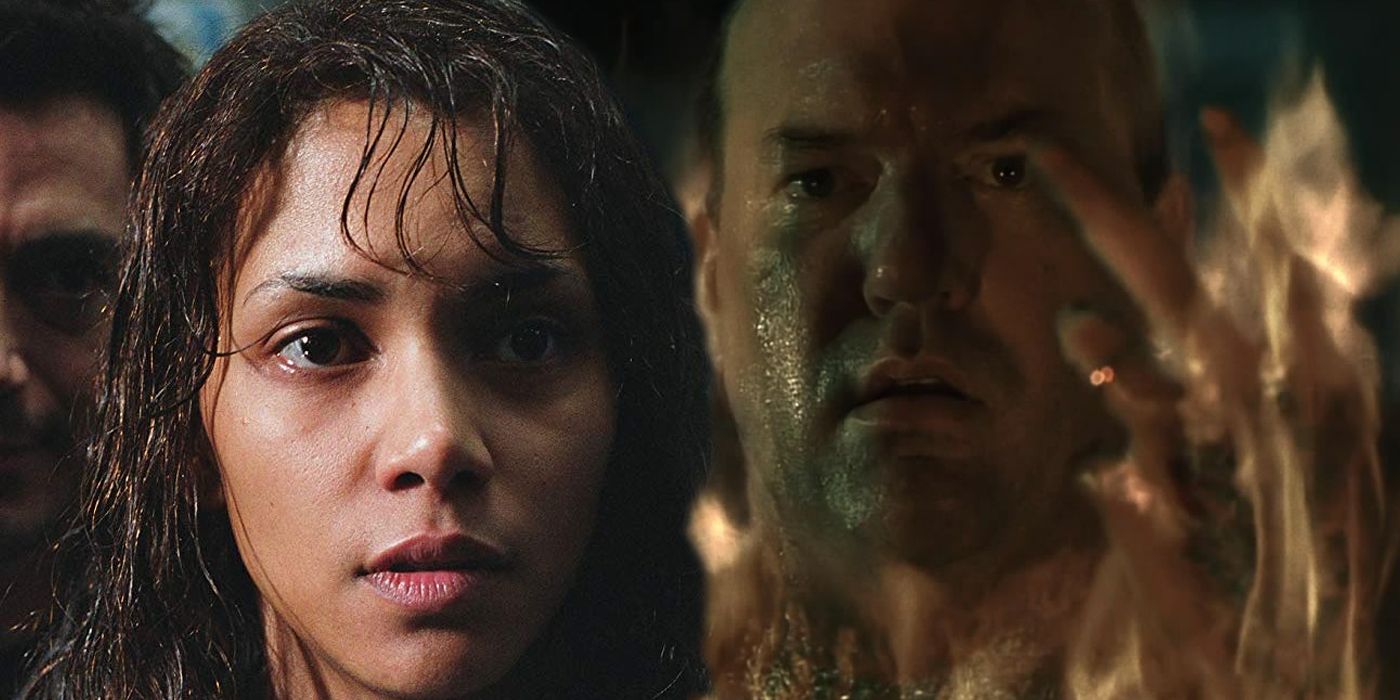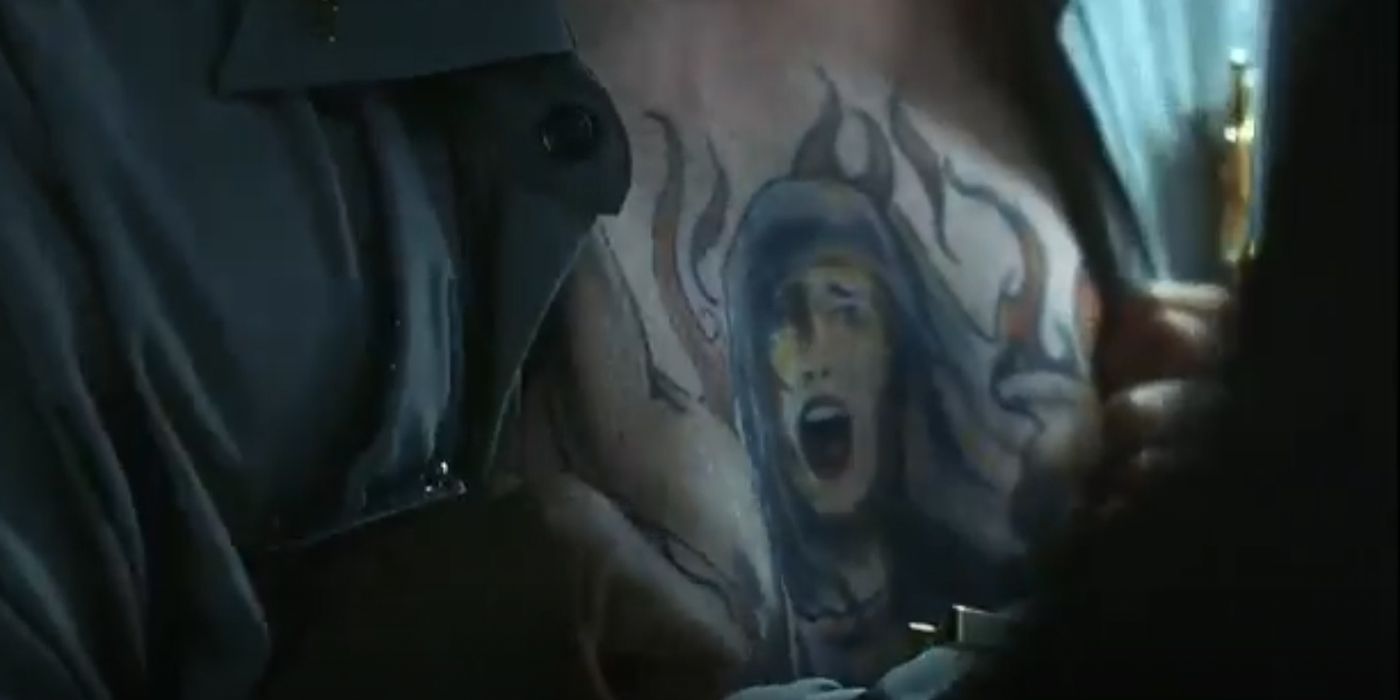
In Gothika, one of the movie's villains has a tattoo on his chest of the Anima Sola, a religious motif whose meaning is related to the movie's story in several ways. The motif's name, Anima Sola, loosely translates to "solitary soul" and is a depiction of a pious woman's soul suffering in the flames of purgatory as she awaits her transition to paradise. While this depiction has many interpretations, its most important meaning in the movie and in real life is as a symbol of purgatory. Purgatory's religious usage refers to it as a temporary place of suffering that exists between death and paradise. However, it also has a more general, non-religious meaning, which simply refers to any temporary state of suffering.
Gothika tells the story of a recently hospitalized woman named Dr. Miranda Grey (Halle Berry), who discovers she has the supernatural ability to commune with the undead. As she discovers her powers, she also tries to solve several intertwining mysteries: why did she kill her own husband, Doug (Charles S. Dutton); who has been raping Chloe (Penélope Cruz) at the hospital; and why did the head doctor's daughter, Rachel, commit suicide. As Miranda's story unfolds, the mysteries unravel, all of which seem to involve a villain with an Anima Sola tattoo on his chest.
Gothika is essentially a ghost story in which Rachel's restless spirit seeks revenge against Doug and Sheriff Ryan (John Carroll Lynch), the men who raped and murdered her. She possesses Miranda to murder Doug, and Miranda is blamed for it. Rachel herself is the Anima Sola, i.e. the solitary soul of a woman temporarily suffering in purgatory. She is shown several times as a tormented ghost enveloped in flames. However, Rachel is not the movie's only Anima Sola. Miranda and Chloe are also both Animas Solas, as are all the women who suffer at the evil whims of Doug and the Sheriff. They are all in a temporary state of suffering. In this way, the Anima Sola tattoo mostly functions as a movie conceit, an ornamental embellishment to the story. It fits the story well, but is not required and can even be removed without disturbing the plot.

Purgatory is represented in Gothika in two main ways: one, the hospital itself is a kind of purgatory in which its patients suffer temporarily under their evil caretakers until death or cure; and two, the afterlife in which Rachel's ghost remains is a kind of purgatory in which she suffers until she is avenged with Miranda's help. Neither of these purgatories perfectly coincides with the religious conception of purgatory, but they all certainly fit the non-religious definition. At the movie's halfway point, Miranda and Pete even discuss the connection between the Anima Sola and Miranda's situation. Pete states it explicitly, saying "You're in crisis. Don't you see how this image is tailor-made for a woman in your state of mind? A woman in purgatory."
In Gothika, the Anima Sola and its main significance as a symbol of purgatory are simply a reference to the various kinds of purgatory and women in purgatory found in the film. They don't function in any other way. The tattoo itself does function as a clue that helps Miranda root out one of the movie's villains, but there is nothing in the movie that requires the tattoo to be the Anima Sola. It could just as easily depict god, the devil, or virtually any other image, religious or not. In other words, the movie doesn't hinge on the tattoo being specifically the Anima Sola: the tattoo is the clue, not its content.
Gothika is an effective and stylish supernatural horror movie in many ways, including its use of the Anima Sola tattoo. However, the Anima Sola is not essential to the movie and is instead simply a way of comparing ghost stories to purgatory. In other words, the use of the Anima Sola is a nice touch, but ultimately contributes more to the movie's style than to its substance.
from ScreenRant - Feed https://ift.tt/3rAhKEd


0 Comments